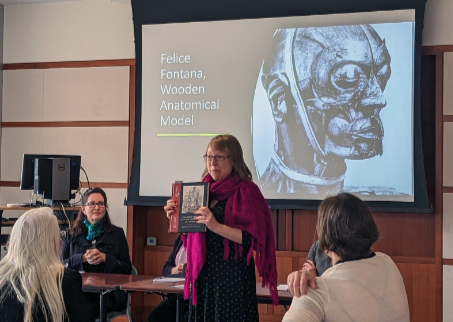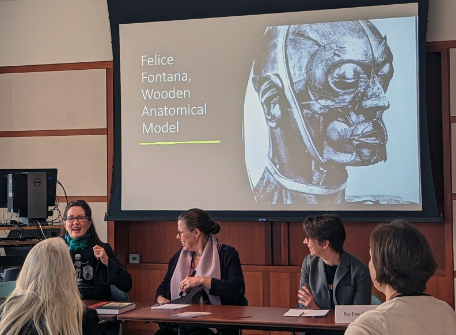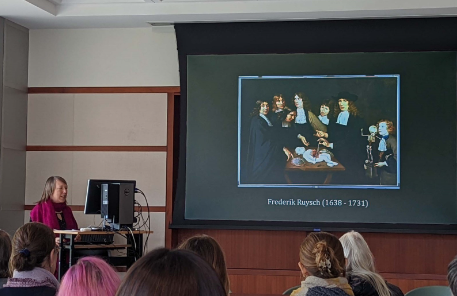
On Friday, November 11, the medical and undergraduate campus came together as Becker and Olin Library held a joint symposium celebrating the recent publication of “Frederik Ruysch and His Thesaurus Anatomicus: A Morbid Guide.” Edited by Joanna Ebenstein (founder and creative director of the Morbid Anatomy Museum) and printed by the MIT Press, the work is the first English translation of Ruysch’s guide to his collection. Becker’s department of Rare Books and Curator Elisabeth Brander contributed to the many full-color illustrations from the original work that were printed in the book.
A lavishly illustrated guide to the magnum opus of the great seventeenth-century anatomist, master embalmer, artist, and collector of specimens.
Frederik Ruysch (1638–1731) was a celebrated Dutch anatomist, master embalmer, and museologist. He is best remembered today for strange tableaux, crafted from fetal skeletons and other human remains, that flicker provocatively at the edges of science, art, and memento mori. Ruysch exhibited these pieces, along with hundreds of other artful specimens, in his home museum and catalogued them in his lavishly illustrated Thesaurus Anatomicus. This book offers the first English translation of Ruysch’s guide to his collection, along with all the illustrations from the original volume, photographs of some his most imaginative extant specimens, and more.
Ruysch was at once a brilliant scientist, a preternaturally gifted technician, an esteemed physician, a religious moralizer, and an artist whose prime form of expression was the medium of human remains. His works were sometimes described as Rembrandts of anatomical preparation”; today they seem so strange that we can hardly believe that they even existed, much less that they were so popular in their time. His combination of the religious and the scientific, the painstakingly accurate and the extravagantly fantastical, offers vivid testimony of an era in which science overlapped seamlessly with religion and art. Essays accompanying Ruysch’s text and images consider such topics as the historical context of Ruysch’s work, the paradox of an artist of death whose work engenders the illusion of life, the conservation of Ruysch’s specimens, and the shifting ascendancies of romanticism and rationality in the natural sciences.
(Source: MIT Press website)
The event featured three presentations given by members of the WashU and St. Louis communities. Each presentation served to help contextualize Frederik Ruysch’s work by looking at the history of anatomy, print engravings, and similar topics.
- “Wondrous Bodies of Knowledge” by Dr. Claudia Swan (Mark Steinberg Weil Professor of Art History, WUSTL)
- “Anatomy of the Print Market in 17th-Century Holland” by Dr. Elizabeth Wyckoff (Curator of Prints, Drawings, and Photographs, St. Louis Art Museum)
- “Extravagant Bodies after Ruysch: The Rise of the Anatomical Wax Museum in 18th-Century Italy” by Dr. Rebecca Messbarger (Professor of Italian, WUSTL)
The three came together to answer audience questions during the Q&A panel, with an enthusiastic discussion and lively input from the audience.

After lunch, Joanna Ebenstein discussed Ruysch and the book in her talk, titled “An Artist of Human Remains: The Macabre Creations of Frederik Ruysch.”

A reception for the symposium was held at Becker Library at the medical campus, where the same engravings and prints that were discussed earlier were now showcased to the public. In addition to five of Ruysch’s works, the library also displayed books and works by other Dutch anatomists from the same era, such as Govard Bidloo and Bernhard Siegfried Albinus.
If these topics and events intrigue you, be sure to also attend Becker Library’s Annual Anatomy Display tomorrow, where books from the rare books collection are brought out to illustrate the history of the study of anatomy. The exhibition is a unique opportunity to see a selection of spectacular medical works dating from the Renaissance to the 20th century up close. This year the display will be hosted November 29, 2-4 p.m. on the seventh floor of Becker Library.
